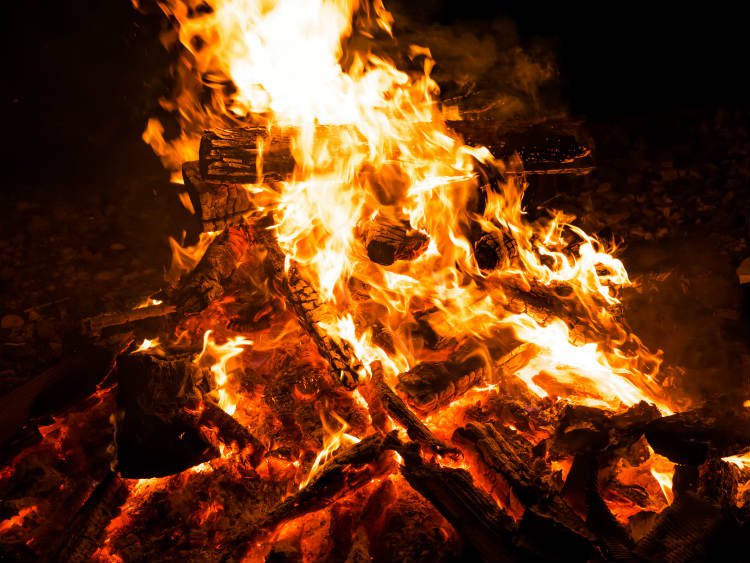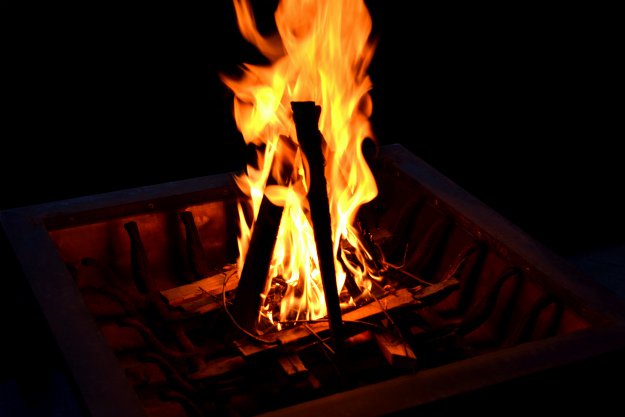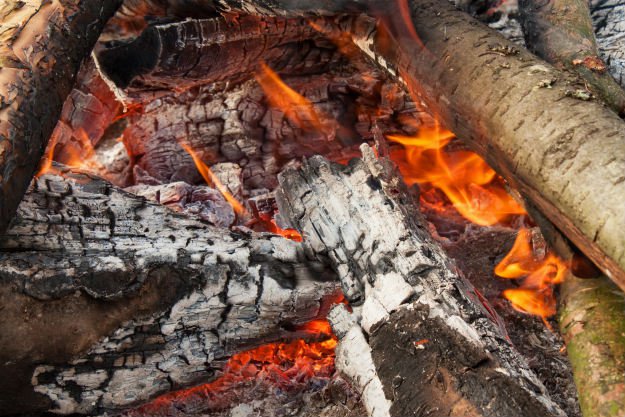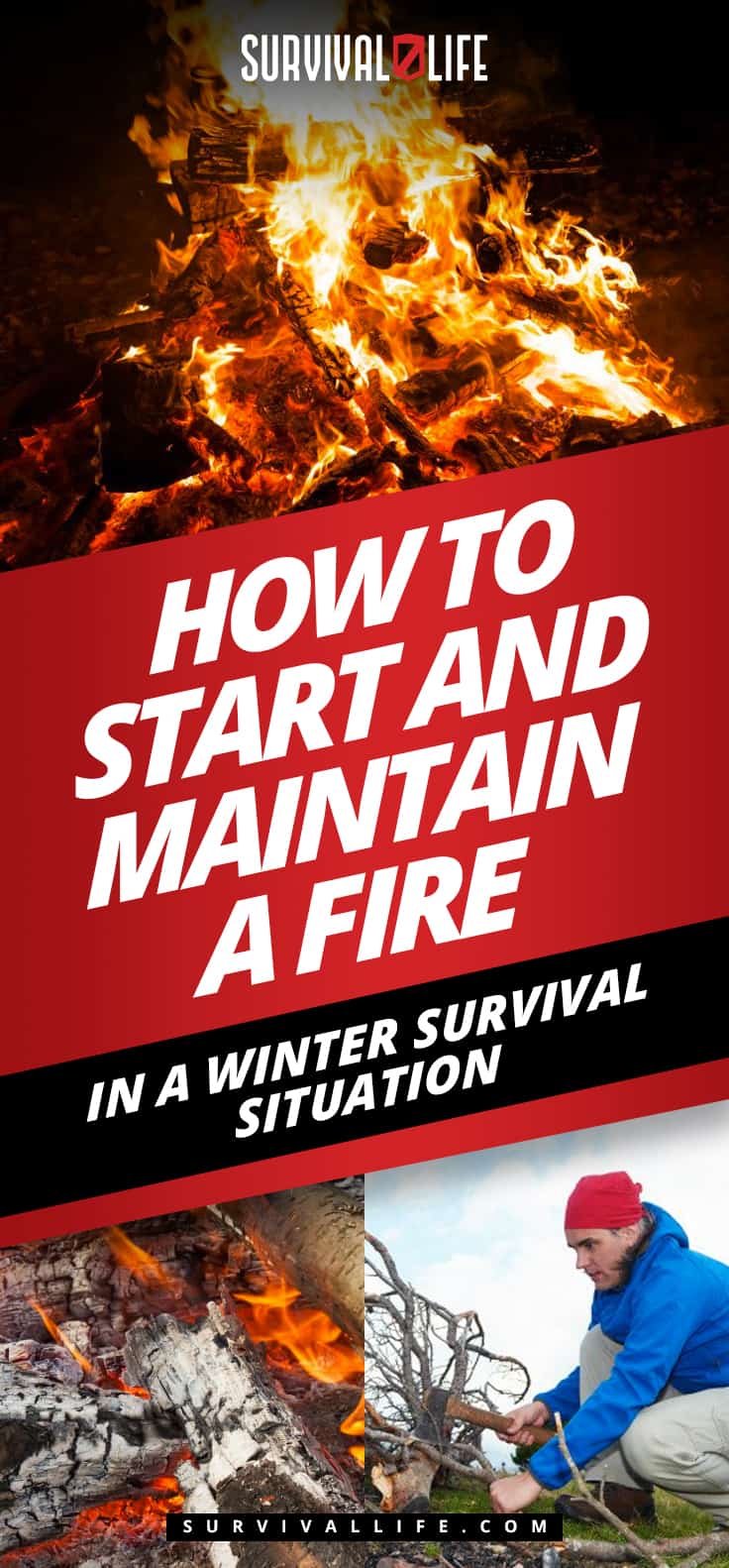Featured Articles
How To Start and Maintain a Fire in a Winter Survival Situation

For this scenario, let’s say you are stranded in the wilderness in the unforgiving, freezing temperatures of winter. What do you do first? Start a fire, of course! Read on to learn how to start and maintain a fire in a winter survival situation.
Start and Maintain a Fire in a Winter Survival Situation
If you have ever started a fire in the wilderness in the dead of winter (possibly with snow on the ground), then you know how challenging it can be. Fire is, however, a necessity to survive. Remember, Hypothermia is the number one threat for any outdoor survivalist – and it can be fatal.
In this article, I’ll take you step by step and show you how you can successfully start and maintain a fire in winter weather conditions. Let’s get started!
An important note before we begin: I cannot emphasize this enough – carry on you, at all times, a ferro rod. Lighters and matches can get wet, therefore, they become useless when it’s time to get a fire going. I think every single person should have one on them at all times. It may sound unnecessary and maybe a little silly. However, it’s one of those “you just never know” items – at least for me. Also, if you are interested in learning primitive methods of fire starting, then check out this article, 10 Steps To A Quicker, Easier And Better Bow Drill Fire from us here at Survival Life.
Gather your materials
You will need to gather (all) materials before you begin the task of starting a fire. Having materials ready for use will allow you to save a massive amount of energy later on. There is nothing more disheartening than to finally get a fire started only to have it die out because you left your fire unattended to gather more materials.

Collect wood to burn through the night and the next day
Take wood that is as dry as possible. This actually can be done even during a rainstorm if you look to areas that are sheltered from the wind. Rain strikes harder and penetrates the naturally protective vegetation when propelled by wind.
Another way to gather the dry wood is to smash branches or logs (that are as round as your wrist) between two rocks. The inner wood of a dull grey colored branch (driftwood) is usually still dry and unsoaked. Use this ‘core’ wood to fuel your starter fire.
Find tinder
Tinder is the thin (and usually light) burnables you use to start a fire. Shredded paper, leaves, and hair are all good starters. Cotton, threads from clothing, down (possibly from your coat), cattails, or pre-made charcloth make good material for a single spark – which is all you need. Note: Charcloth is an excellent tinder. If you know you are going to be in the wilderness, having some already pre-made is a great idea!
A pile of these tinder materials that will fit in both of your hands cupped together is a respectable amount to begin with.
Put together the catch
The next level of wood that the tinder will be placed among or inside of is a ‘tepee’ (formed from the small twigs). That “tepee” is called the catch. This material is usually thicker than the tinder and can consist of pine needles, branches thinner than a wooden pencil (in most instances), and strips of dry bark from trees.
The catch can also include tree sap from pine trees (which is extremely flammable) and pine cones as well. These materials are expected to catch fire from the hot, rapidly burning tinder and will grow the flames larger and hotter, as these twigs are more substantial than the fibrous tinder.

Branches and Logs
Branches of increased size in comparison to the catch are to be added to the flames. The whole idea is not to smother the fire with thick, compressing logs. The goal is to grow the base of the fire for the roasting and eventual burning of larger logs. The fire will consume these branches and produce the first decent sized coals. These will be used to burn even more logs later. Soon after having a good amount of flame rising through a group of branches and logs criss-crossed in the flames, you will be able to set what would be considered real logs in your fire and let them burn for a longer period of time. You want the logs to roast in the fire. This way you don’t have to constantly keep tending the fire every second of your time in a winter survival situation.

If the supplies are available, cook food and boil water from gathered sources. The other survivors should gather and stockpile burnable wood for the fire.
Just remember to always try to stay as calm as possible in any winter survival situation. Your mental strength is just as important (if not more important) than your physical strength; as survival is 90% mental.

Want to learn more? Follow us on Facebook and Twitter for the latest survival tips and news!
Looking for a few items to ensure you are ALWAYS prepared to start and maintain a fire in a winter survival situation? Check these out!
- Always be able to start a fire with this 2 PCS 1/2 Inch X 6 Inch Ferrocerium Rod Flint Fire Starter!
- Keep a reliable lighter in reach at al times with this waterproof Everstryke Match Pro Lighter!
- Be sure to always have a way to cut wood when you are out in the wilderness with this EverSaw 8.0 Folding Hand Saw
-

 Do It Yourself7 months ago
Do It Yourself7 months agoParacord Projects | 36 Cool Paracord Ideas For Your Paracord Survival Projects
-

 Do It Yourself9 months ago
Do It Yourself9 months agoHow To Make Paracord Survival Bracelets | DIY Survival Prepping
-

 Do It Yourself9 months ago
Do It Yourself9 months ago21 Home Remedies For Toothache Pain Relief
-

 Do It Yourself10 months ago
Do It Yourself10 months agoSurvival DIY: How To Melt Aluminum Cans For Casting
-

 Exports8 months ago
Exports8 months agoAre Switchblades Legal? Knife Laws By State


Pingback: How To Baton Wood With A Survival Knife [Video] | Survival Life